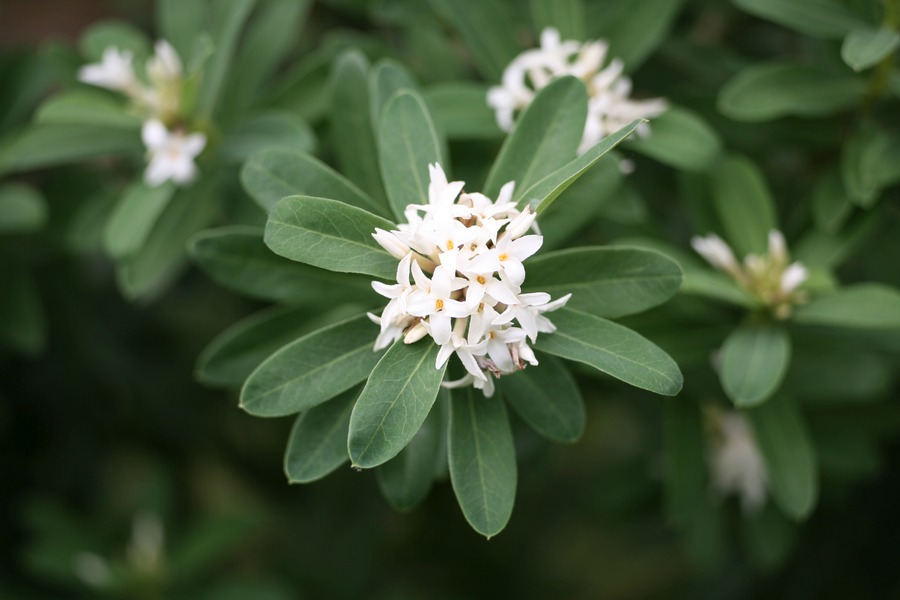


Source: Wilson Bros. Gardens (GA)
Size shipped: #2 pot (measured almost 2')
Planted: In ground, May 2020
First flowering: May 2020
(This plant stayed behind when I moved in 2021; therefore, the following text will receive no further updates.)
The substrate was noticeably loose even shipped straight from the nursery, and the pot had the biggest drainage holes I've ever seen; I guess it's because everyone says that daphnes need excellent drainage. This daphne now lives underneath the dinette window (east side of house, so morning sun but afternoon shade, which is ideal) so that we can open it and let the fragrance in, since daphne fragrance is legendary and this one is claimed to bloom from May to September. (In our first year with us, it actually bloomed from May to November.)
The planting was noteworthy in a few ways. Not the rootball -- that was easy enough to loosen; there were no huge roots on the outside. What struck me about it, rather, was how loosely the trunk seemed connected to almost the entire rest of the rootball; this is the first plant I can remember not trusting to stay in one piece if I lifted it out of the pot by the trunk. Instead I had to lay the pot on its side and slide the whole thing out that way. For the same reason, this is also the first plant I've ever used three stakes on (as low as possible), and to make sure it would stay upright at all, instead of staking strictly to prevent being blown wildly by the wind like with the Edith Bogue magnolia. Without the stakes, this daphne would be able to twirl in a disturbing radius.
While it's true that by October 2020 this daphne had grown about a foot while also blooming continuously, it also took until October to be able to stay upright without the stakes; this was driven home forcefully by a rainfall in early September resulting in the entire plant flopping away from the house. But all in all, ever since it finally got over its dependence on supplemental watering sometime in the summer, the daphne has been a real star in my yard. On top of that, it has proven mostly immune to the deer that munched a number of my other plants in November 2020 through March 2021; a number of its branches were flattened underneath the winter's huge snow load and those kept all of their leaves, green and healthy as anything, but even those that weren't were not completely stripped bare like the unfortunate hollies (outside the fence) were. Now as long as it doesn't die suddenly and inexplicably like daphnes are notorious for doing...
The daphne's 2021 bloom began in early April, which portends an even longer bloom season than 2020;
I'm certainly not complaining. In May, I finally got sick enough of the weak-wooded flopping over
to do something about it, severely thinning out the heavier side of the daphne (the branches that had been
buried under snow all winter and therefore didn't have their leaves munched by the deer but also were
thus even more biased towards flopping over due to being held at that angle by the snow for so long)
to redistribute weight, eliminate lion's-tailing as much
as possible, and hopefully promote some new growth lower down on each stem to strengthen the wood.
I remain disturbed by the degree to which the roots are able to rock back and forth; it would seem to
indicate that the roots haven't grown laterally into the surrounding soil far enough to anchor the
daphne properly and, when combined with all the kinked roots growing in odd directions very close to
the trunk (which implies that this plant wasn't up-potted fast enough at the nursery), does not inspire
me with confidence about the long-term viability of the root system.
It makes me wonder if it would be a good idea to grow daphnes in root-pruning containers from the start,
so that one wouldn't need to either root prune them at each up-potting (since daphnes are universally
agreed to dislike any root disturbance) or live with such obvious root defects.